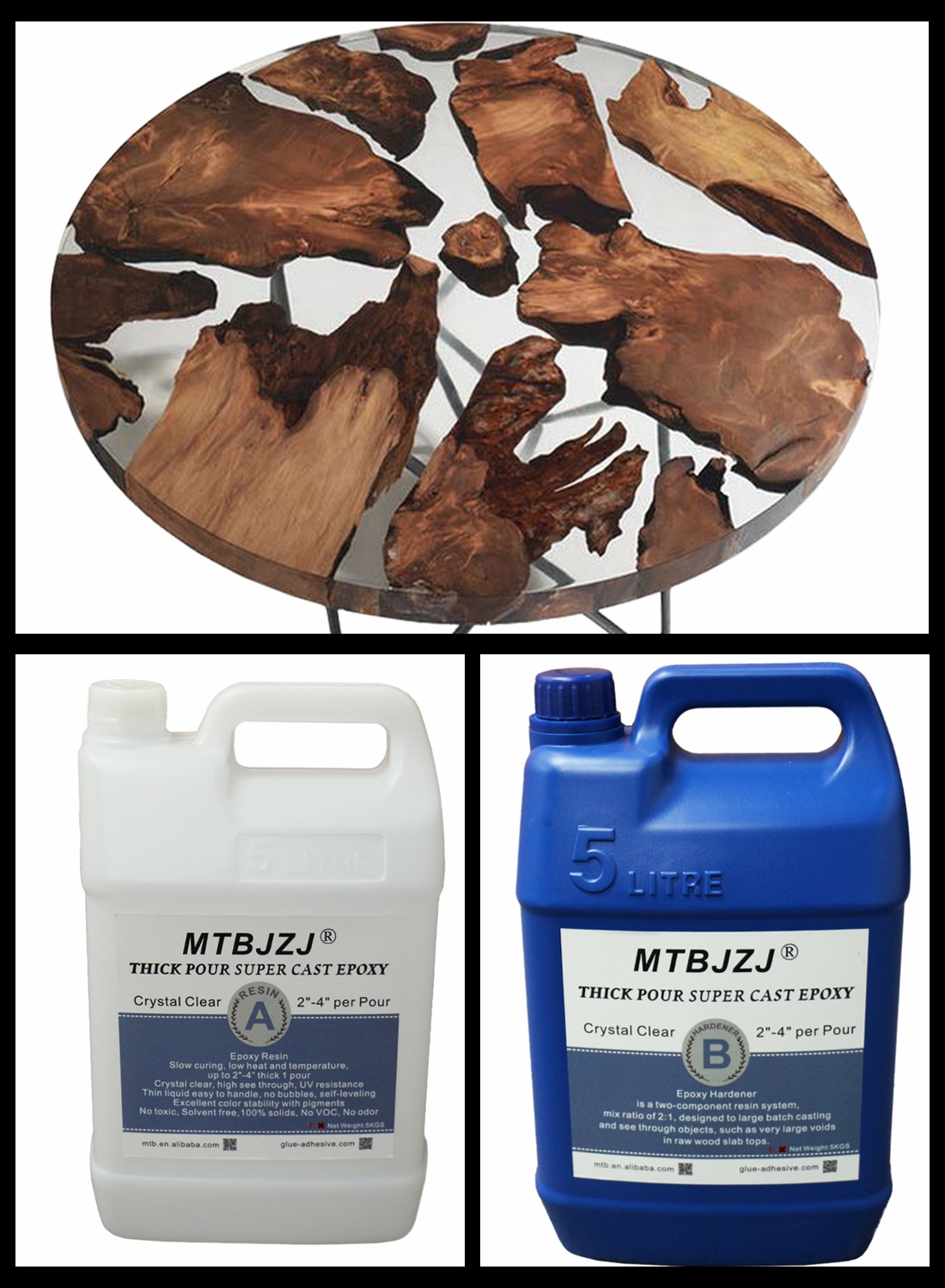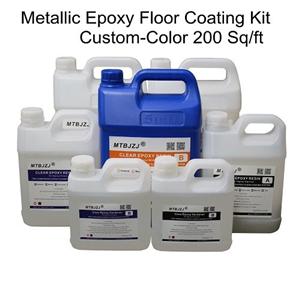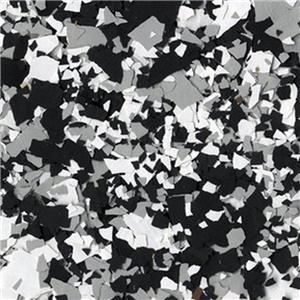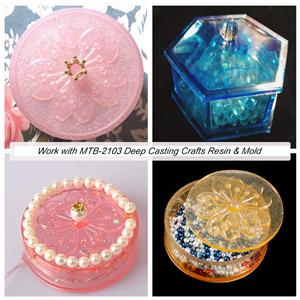MTB-2103 Epoxy Deep Cast Resin for River Tables
MTB-2103 Epoxy Deep Cast Resin for River Tables

Product Description
MTB-2103 is a two-part water-clear epoxy casting resin developed to offer unrivalled clarity, air release and UV resistance.
MTB-2103 has been formulated for maximum compatibility with a wide range of substrates and mould materials and is particularly suited for casting into wood where it can be used to create stunning thick, clear resin infills in furniture - such as river tables.
MTB-2103 can be cast directly into wood at thicknesses of up to 50-100 mm in a single pour.
When casting into other materials (such as silicone or plastic moulds) it is possible to cast up to 100mm in a single pour - however care should be taken to avoid the risk of exotherm.
Coating Resin Vs Casting Resin
MTB-2103 is a casting resin, not a coating resin. As such flatting and polishing of the cured open surface would usually be required in order to achieve a perfectly
smooth gloss finish.
For perfectly flat, glossy coatings our MTB-3309 Surface Coating Resin should be used instead. A flat glossy finish can also be achieved on thicker castings bypouring a thin layer of MTB-3309 over cured MTB-2103 Recommended Uses
MTB-2103 can be used for just about any application that requires a waterclear,bubble-free and highly tough resin casting. It is particularly suitable as a clear casting resin into wood.
MTB-2103 can be used as a thick coating over existing surfaces but would or into moulds made from silicone rubber and of course it can be poured into knot-holes, cavities and gaps between wood for furniture pieces like epoxy river tables.
Typical uses include:
River tables / knot holes
Wood and resin combination furniture
Clear castings / sculptures / figurines
Encapsulations
Paperweights
Essential Information
Before use, it is important for users to read the following information and ensure that instructions are followed correctly, particularly those points relating to working temperatures, weighing and mixing.
Unsatisfactory results are almost always caused by unsuitable ambient temperatures, casting thicknesses or improper weighing or mixing.
Ambient Temperature
Like most epoxy resins, the way that MTB-2103 will cure is very dependent upon the ambient temperature. MTB-2103 should always be mixed, poured and cured at a constant room temperature of around 20°C. Ambient temperatures much above 20°C
The resin will mix, pour and cure very well in ambient temperatures higher than 20°C however working in higher ambient temperatures will cause the resin to cure faster which offers an increased risk of exotherm (over-heating during cure) particularly when casting into insulating materials, such as wood. Ambient temperatures much below 20°C
At lower temperatures the resin will be thicker making it harder to mix and less able to release air bubbles during the cure. The resin will also take longer to cure.
In temperatures 15-20°C a heat-gun will be necessary to remove air bubbles. Use below 15°C is not recommended.
Casting Thickness
When casting into wood the insulating effect of the wood (particularly if you also have a wooden base/board) can make it very difficult for the resin to lose heat
as it cures. This limits the maximum recommended castable thickness when casting into wood at 50-100mm. This is particularly important when working in higher ambient temperatures (anything above 20°C).
When casting MTB-2103 into less insulating materials such as plastic or silicone moulds it is often possible to cast up to 50mm in thickness in a single pour however you should always be aware of the potential for exotherm, especially when working in warmer ambient temperatures.
Mix Ratio
MTB-2103 is a two-part epoxy resin system. As soon as the two parts are mixed together they will begin to cure.
It is essential to mix the resin and hardener exactly at the correct mix ratio. Failure to do so will result in a poor or only partial cure of the resin. Under no
circumstances add ‘extra hardener’in an attempt to speed up the cure time; epoxies do not work in this way.
Mixing by Weight
100:50 (2:1)
If you prefer to measure out the resin by weight (instead of volume) then the mix ratio that must be used is 100 parts resin to 50 parts hardener.
Correct Mixing Procedure
Measure the exact correct ratio of resin and hardener into a straight sided container. Using a suitable mixing stick begin to mix the resin and hardener
together to combine them completely.
Spend several minutes mixing the resin and hardener together, paying particular attention to the sides and base of the container. Remember: Any resin that has not been thoroughly combined with hardener will not cure.
Once you have finished mixing in one container, it is good practice to transfer the mixed resin into a second, clean mixing container and undertake further mixing of the resin using a new mixing stick. Doing so will eliminate the risk of accidentally using unmixed resin from the bottom or sides of the original container.
Getting the Best Results
There are so many ways that GlassCast?50 can be used, getting the most from this resin means understanding the way the resin will respond to various conditions, as well as learning the best techniques for specific applications.
Resin River Table Guide
If you are using MTB-2103 as the resin infill on a river table then it is highly recommended to read our:
MTB-2103 Complete Guide to Making Your Own Resin River Table This complete guide includes step-by-step information on how to make your own table or other furniture piece using MTB-2103 and live-edge wood including essential advice on how to:
Calculate the amount of resin needed
Tint/colour the resin
Set up barriers to contain the resin
Prepare and seal the wood to prevent air bubbles
Mix and pour the resin in stages to prevent exotherm or air bubbles
Pouring onto Partially Cured (B-stage) Resin
The easiest way to build up the resin in multiple-pours is to allow the preceding layer to cure to what is known as the ‘B-stage’. The B-stage is the point at which
the resin has firmed up, so that it is no longer a liquid, but it has not fully cured. When the resin is correctly at the B-stage, using a gloved finger you should beable to press a fingernail into it but no resin should come off on your glove. The advantage to pouring new resin onto partially cured (B-stage) resin is that no
surface preparation is required and the new resin will bond chemically with the previous layer (known as crosslinking).
Pouring onto Fully Cured Resin
If the first layer cures past the ‘B-stage’ (see above) then you can still pour a new layer on top of it however it then becomes essential to allow the previous layer to
cure fully and then key the surface using an abrasive paper in order to allow the new resin to mechanically bond to the previous layer.
To pour a new layer onto fully cured resin use a coarse abrasive paper (80 to 120 grit) to fully abrade the whole surface of the cured resin. Don’t worry about
the scratched appearance; as soon as the new.




